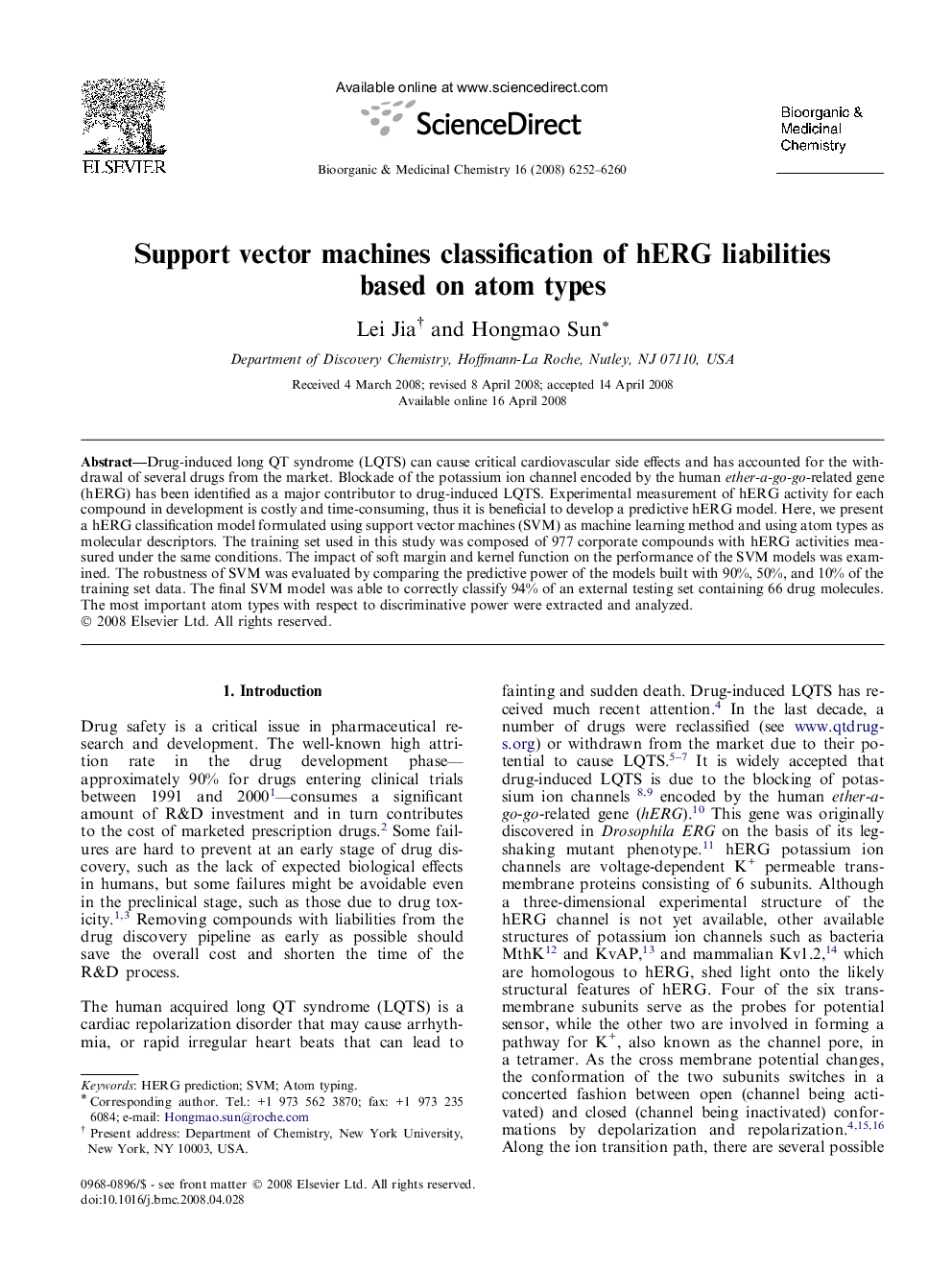| کد مقاله | کد نشریه | سال انتشار | مقاله انگلیسی | نسخه تمام متن |
|---|---|---|---|---|
| 1360744 | 981446 | 2008 | 9 صفحه PDF | دانلود رایگان |

Drug-induced long QT syndrome (LQTS) can cause critical cardiovascular side effects and has accounted for the withdrawal of several drugs from the market. Blockade of the potassium ion channel encoded by the human ether-a-go-go-related gene (hERG) has been identified as a major contributor to drug-induced LQTS. Experimental measurement of hERG activity for each compound in development is costly and time-consuming, thus it is beneficial to develop a predictive hERG model. Here, we present a hERG classification model formulated using support vector machines (SVM) as machine learning method and using atom types as molecular descriptors. The training set used in this study was composed of 977 corporate compounds with hERG activities measured under the same conditions. The impact of soft margin and kernel function on the performance of the SVM models was examined. The robustness of SVM was evaluated by comparing the predictive power of the models built with 90%, 50%, and 10% of the training set data. The final SVM model was able to correctly classify 94% of an external testing set containing 66 drug molecules. The most important atom types with respect to discriminative power were extracted and analyzed.
The receiver operating characteristic (ROC) curve of the SVM model built on the basis of the whole training set. Area under curve (AUC) of 0.92 indicates that the model is excellent.Figure optionsDownload as PowerPoint slide
Journal: Bioorganic & Medicinal Chemistry - Volume 16, Issue 11, 1 June 2008, Pages 6252–6260